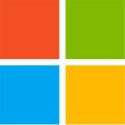
AMD Instinct MI300X Released at Opportune Moment. NVIDIA AI GPUs in Short Supply
LaminiAI appeared to be one of the first customers to receive an initial shipment of AMD's Instinct MI300X accelerators, as disclosed by their CEO posting about functioning hardware on social media late last week. A recent Taiwan Economic Daily article states that the "MI300X is rumored to have begun supply"—we are not sure about why they have adopted a semi-secretive tone in their news piece, but a couple of anonymous sources are cited. A person familiar with supply chains in Taiwan divulged that: "(they have) been receiving AMD MI300X chips one after another...due to the huge shortage of NVIDIA AI chips, the arrival of new AMD products is really a timely rainfall." Favorable industry analysis (from earlier this month) has placed Team Red in a position of strength, due to growing interest in their very performant flagship AI accelerator.
The secrecy seems to lie in Team Red's negotiation strategies in Taiwan—the news piece alleges that big manufacturers in the region have been courted. AMD has been aggressive in a push to: "cooperate and seize AI business opportunities, with GIGABYTE taking the lead and attracting the most attention. Not only was GIGABYTE the first to obtain a partnership with AMD's MI300A chip, which had previously been mass-produced, but GIGABYTE was also one of the few Taiwanese manufacturers included in AMD's first batch of MI300X partners." GIGABYTE is expected to release two new "G593" product lines of server hardware later this year, based on combinations of AMD's Instinct MI300X accelerator and EPYC 9004 series processors.
The secrecy seems to lie in Team Red's negotiation strategies in Taiwan—the news piece alleges that big manufacturers in the region have been courted. AMD has been aggressive in a push to: "cooperate and seize AI business opportunities, with GIGABYTE taking the lead and attracting the most attention. Not only was GIGABYTE the first to obtain a partnership with AMD's MI300A chip, which had previously been mass-produced, but GIGABYTE was also one of the few Taiwanese manufacturers included in AMD's first batch of MI300X partners." GIGABYTE is expected to release two new "G593" product lines of server hardware later this year, based on combinations of AMD's Instinct MI300X accelerator and EPYC 9004 series processors.








































































